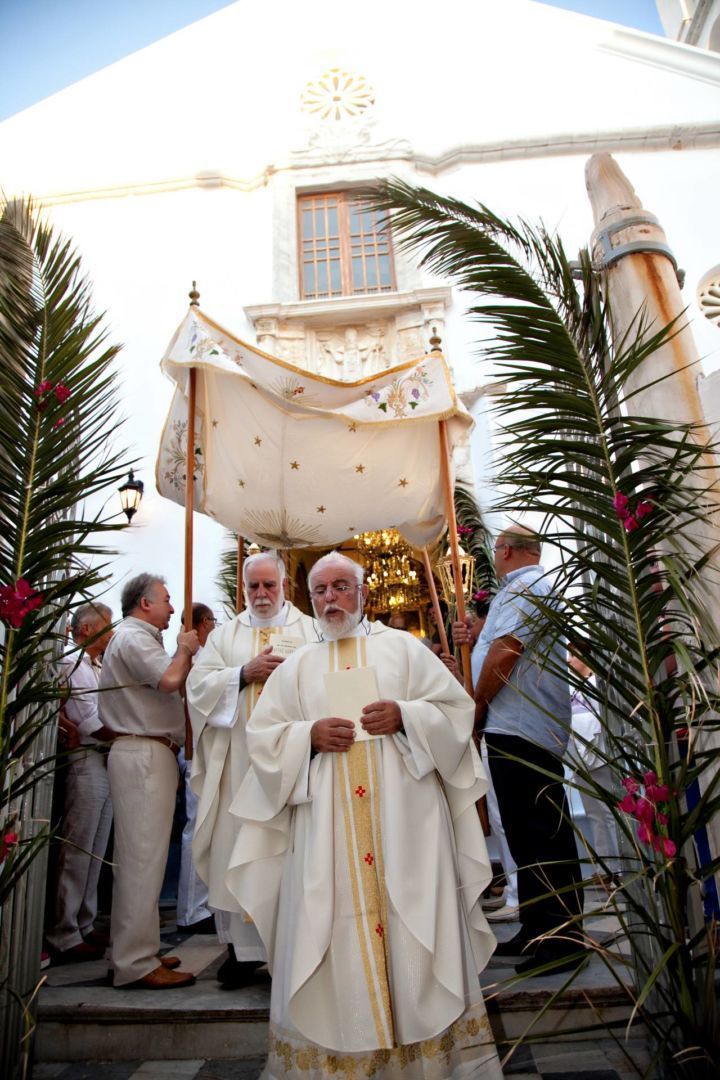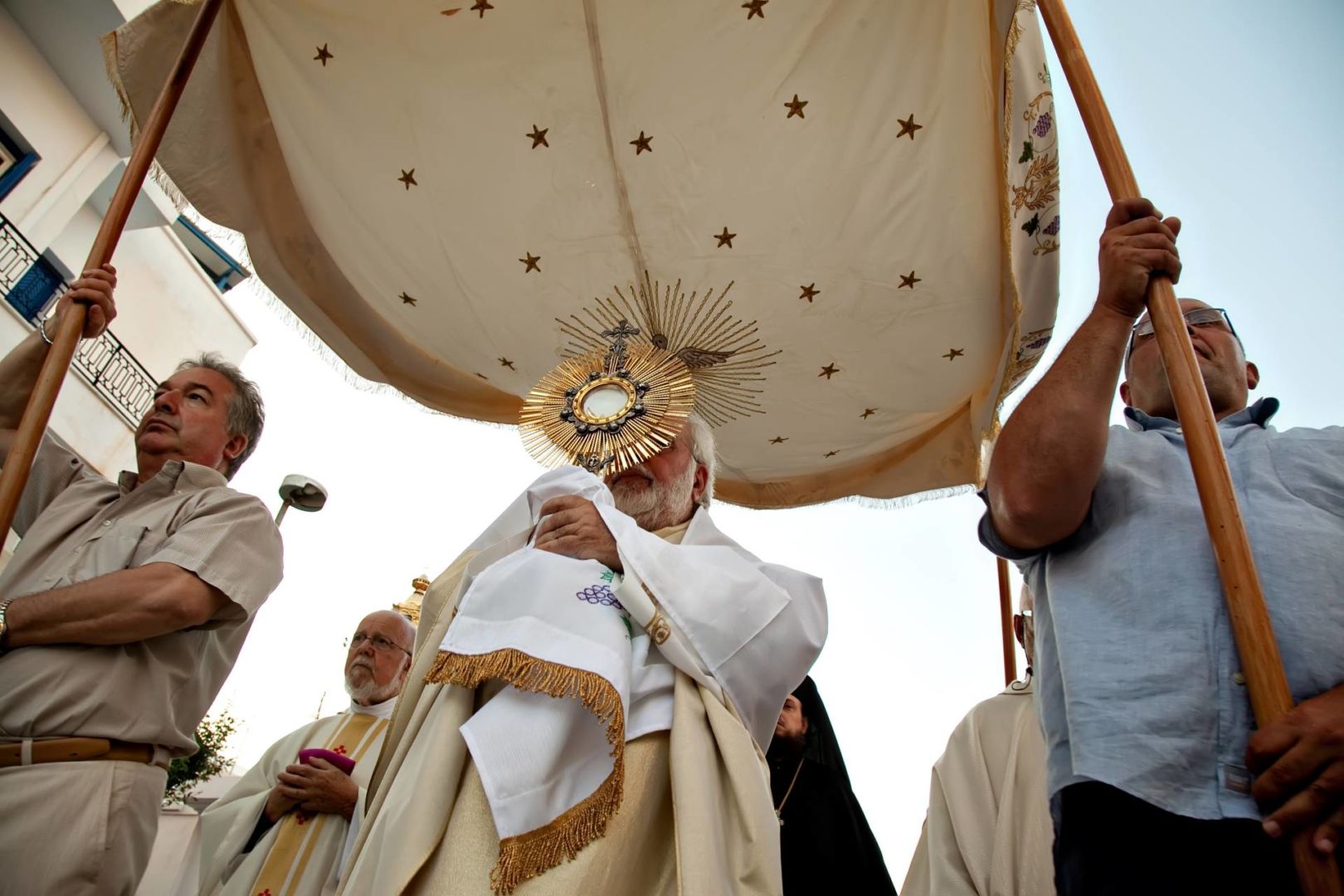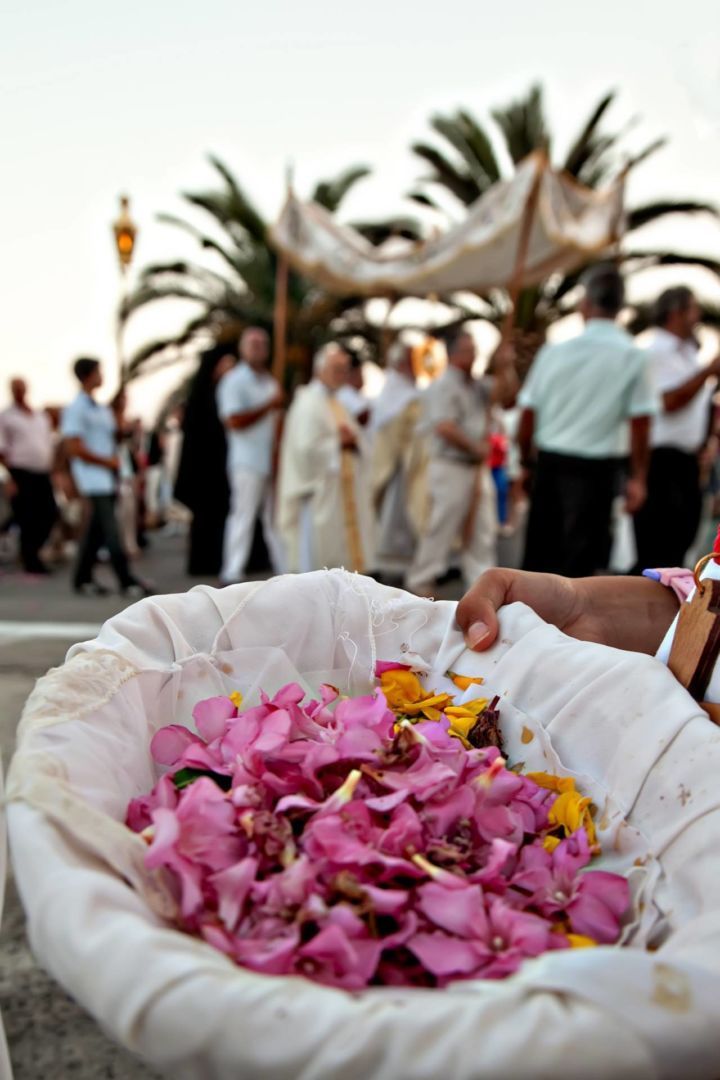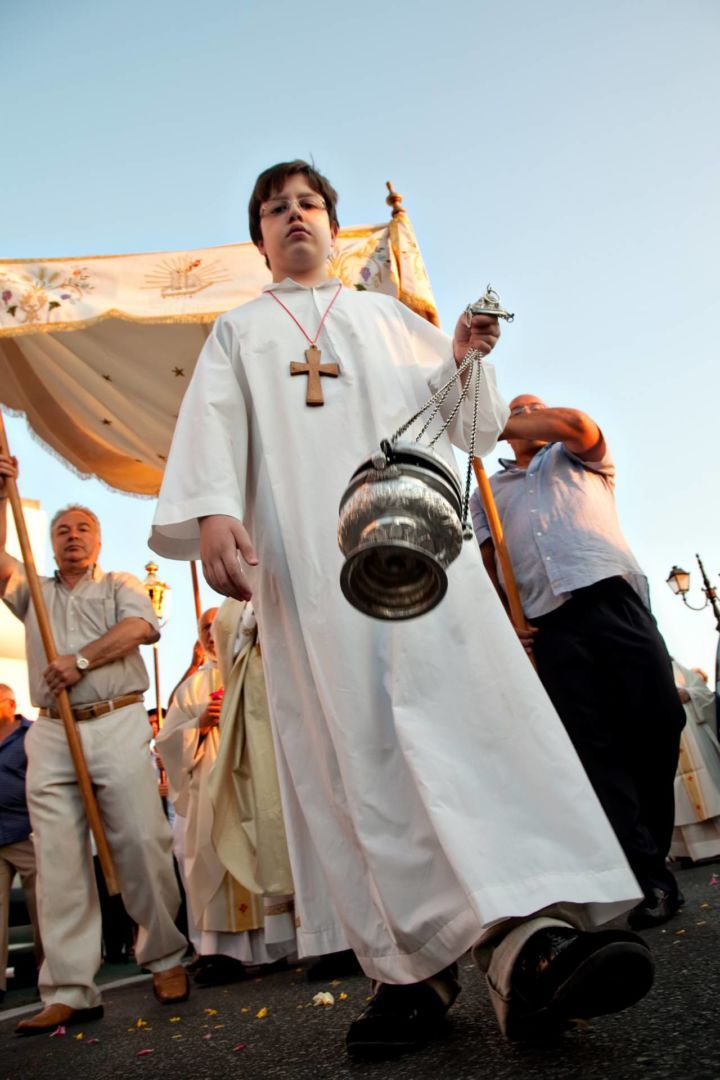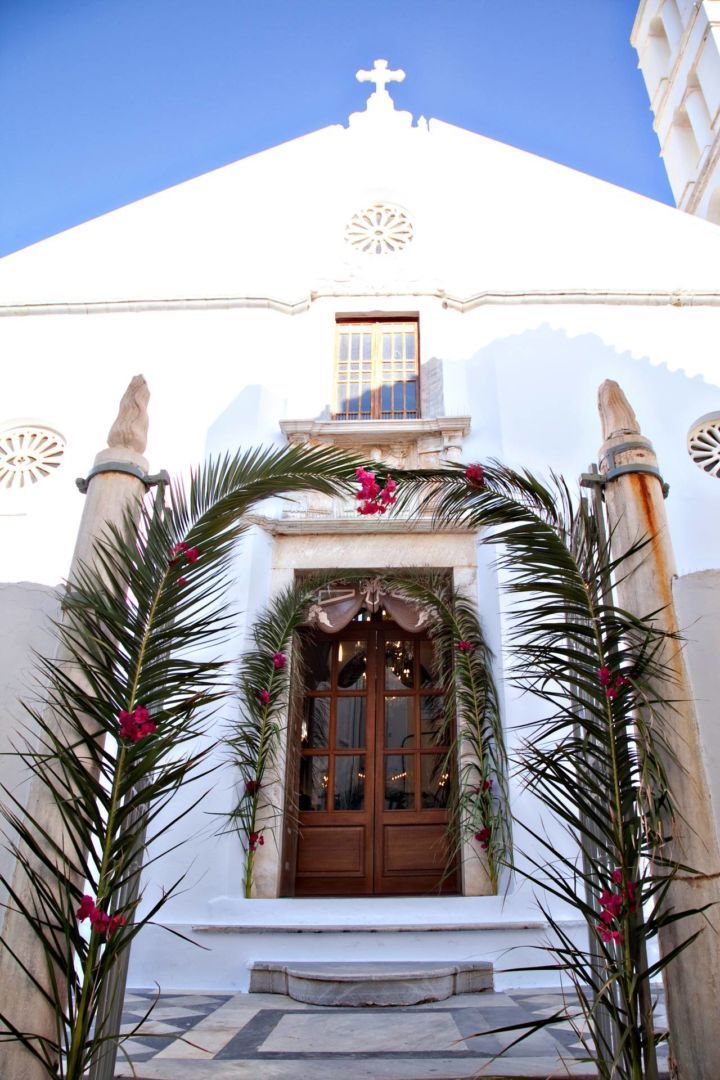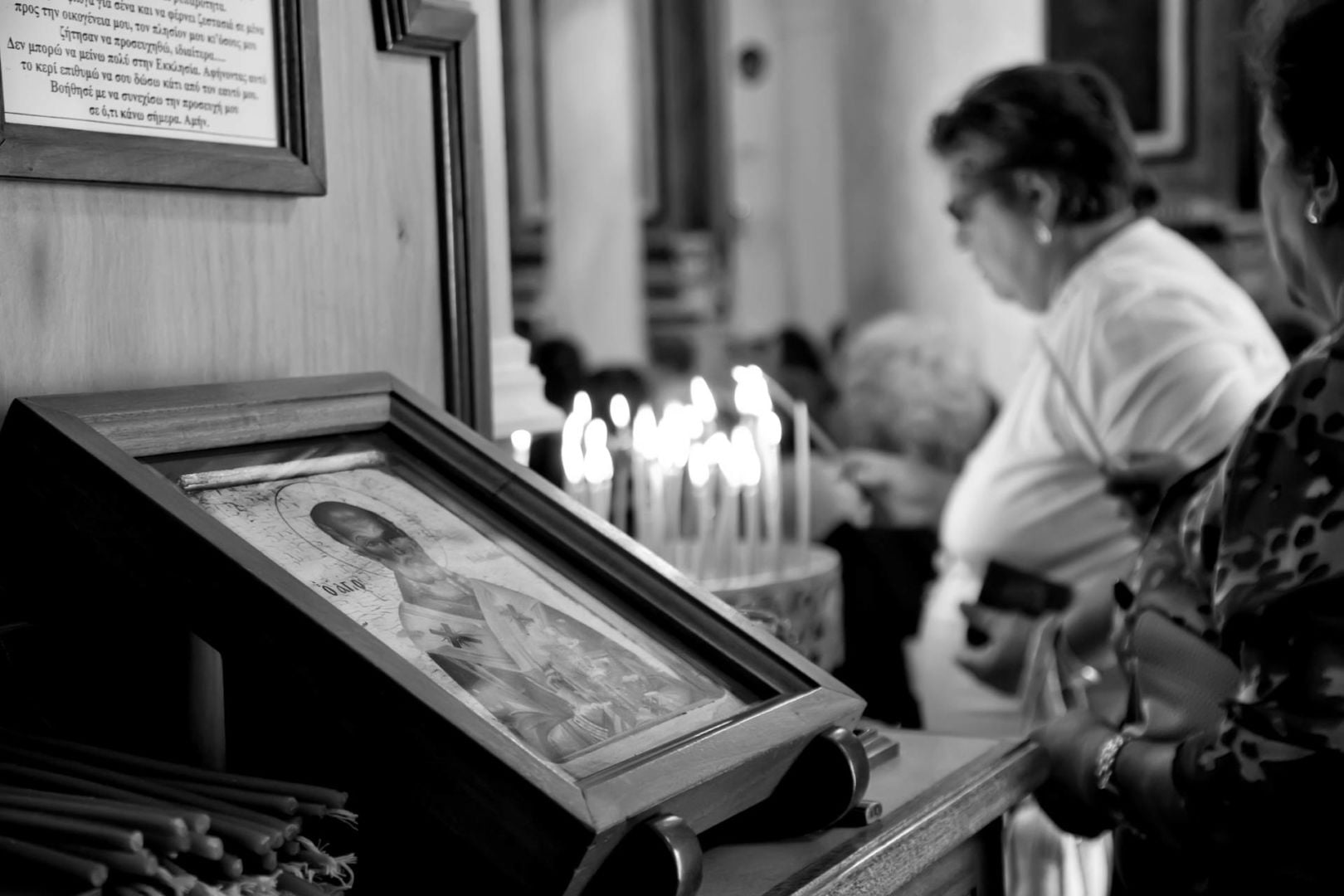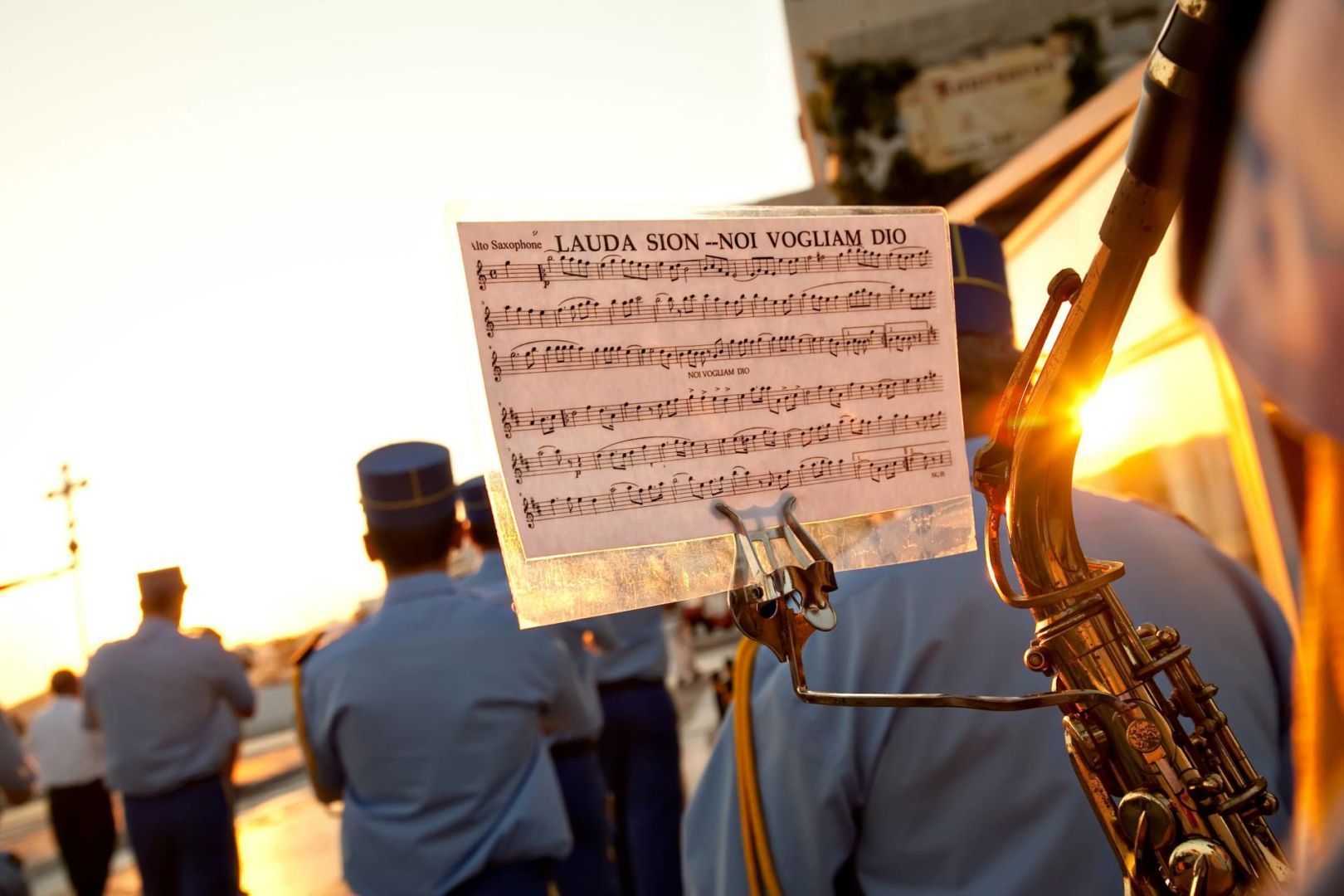Shed light on the catholic side of the island
A discussion with Father Foskolos made us see a different, perhaps not that known to most people, aspect of Tinos. The catholic tradition is diffuse all over the island and we present it to you.
13th century. Catholicism is closely connected to Frankokratia. For 2 ½ centuries there is no catholic flock except for a small minority of 20-30 people with just one bishop as well as the Venetians of Gizi family whose Tinos is land.
In 1390 Tinos becomes Venetian state and changes. Italians and other Europeans arrive at the island. In order to reinforce and strengthen the local catholic flock, people –mostly farmers- are asked to become Catholics in exchange for money. Most families say yes and in this way 25-30 parishes are formed in the villages which are founded later. Every village also constitutes a parish.
In spite of the fact that in reality we talk about a small community, Tinos those days back assures people’s freedom. In the mid-15th century people of other islands resort to Tinos so as to live under Christian government and feel more secure.
The Turkish rule is quite short in time for Tinos. In 1538 we have the revolution against the Turkish while in by the beginning of the 18th century even more Venetians arrive at the island. In 1730 Chora is formed as we know it today. People remain divided by an imaginary line. Catholics live in the villages of the inland and Orthodox in Chora and port. Still, in many villages such as Ktikados, Steni or Kardiani, the population is mixed.
Fortunately, back in the centuries there is no substantial conflict between the two dogmas mentioned. More or less, coexistence was and remains peaceful. Just two incidents are worth-mentioned; the first one was back in 1700 regarding who was going to govern the island. The inhabitants of Chora came up against the people of the villages. It was more a conflict between traders and farmers. The second one took place after the period of German Possession; the orthodox considering that Italians and Catholics were the same thing, thought that when the first ones departed the second ones would follow.
Nowadays, the two dogmas coexist in harmony. As a matter of fact, unlike foreign cities, the celebration of Easter is realized at the same date so as to avoid difficulties in social and functional level.
However, Catholics have their own customary culture which is connected to byzantine and Latin traditions. A very significant feast for the catholic world is the one of Corpus Christi. 60 days after Easter, believers celebrate the Last Supper with a great litany in the central streets of Chora which are beautifully adorned, as well as the big villages. Other important celebrations are of Santa Angela and Saint Francis of Assisi which are celebrated in some of the 300 churches of the island. Finally, in Tinos there are also realized two pilgrimages; of the Sacred Heart in Xobourgo and Panagia in Vrisi. Both of them while their celebration, welcome lots of people from the other islands as well.
Nevertheless, in general, religious tourism in Tinos is not that intense as one may think. Tinos doesn’t have the infrastructure to cover both churches. It is not by accident the fact that most people don’t know anything else rather than Panagia of Tinos. The villages remain marooned as there is no sign of program to include them. Still, Tinos isn’t only Chora. In order all religious features –that are innumerous in the island- to be properly exploited, official programs must be created with respect to history, nature and morphology of the island. At the same time, the visitor who will go to the inland, should find there all things required for a pleasant and satisfactory stay. In a few words, local authorities should pay attention to other parts of the island through the creation of infrastructure and other facilities, road preservation etc. for instance, visits or tours could be arranged at the chapels of inland but this is something that at least for now, is just an idea. This summer, the Christian Women Conference is taking place in Tinos. 350 women from all over Europe are coming to Tinos to take part in the Conference. Such acts reinforce religious tourism in local and national level. So, all of us have to be supportive and work towards this direction.


 Ελληνικά
Ελληνικά 

